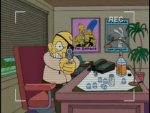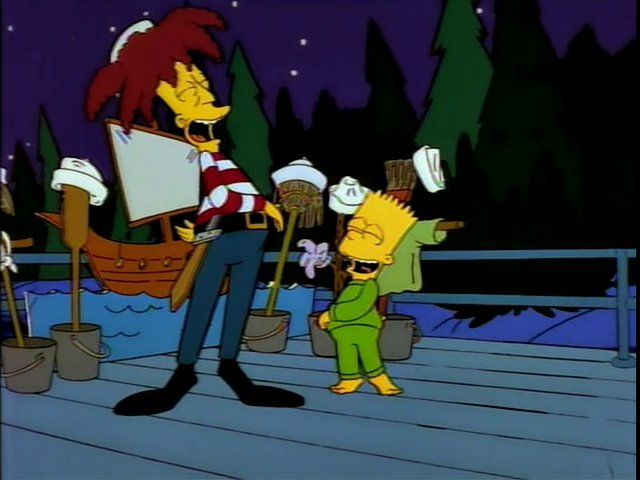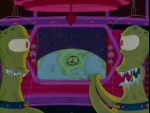Ten years ago, I wrote an article about my top ten favourite, and bottom five worst Simpsons episodes. At the time, the series already seemed to have run out of gas. A decade later and to my shock and horror, it’s still going. All be it with average weekly ratings lower than a lot of mid-tier YouTube channels.
With all this time passed, have I changed my opinion on my original picks? Let’s take a look. You can also check out the original list here.
The 10 Best Episodes
#10. Marge vs the Monorail (Season 4)
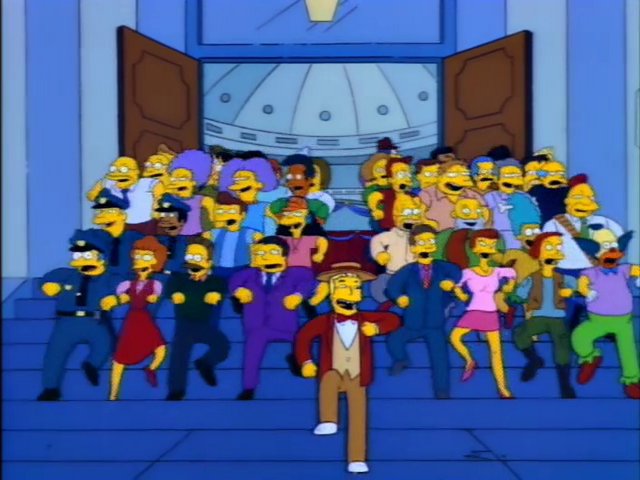
No matter where you live, the local council has probably embarked on some expensive project that ends up making little sense. Springfield is certainly no exception to the rule.
A charismatic salesman bursts into town pitching his shiny new monorail project. The city has money burning a hole in their pocket, so they accept. Only later do they realize the whole thing’s’ a big scam, and that shiny new monorail is a death trap.
This whole episode is a wonderful parody of the Music Man. It’s a lot of fun, with its numerous quotable jokes and quick gags. It features a pair of great guest appearances by the late Phil Hartman and Leonard Nemoy. It’s a little more outlandish than most fare in the early seasons, which did turn some people off. Since then, it’s become an undisputed classic and really shows off Conan O’Brian’s writing talent.
#9. El viaje Misterioso de Nuestro Jomer (Season 8)

El Vaije is one of those “smart” episodes of the Simpsons, which decides to dig deeply into philosophical subject matter through the lens of Our Favourite Family. Here we explore the nature of human relationships, and just what exactly is a “soul mate”. It’s also one of the most beautiful animated episodes of the entire run. The imagery from homer’s capsicum induced trip draws heavily from south-west Native American mysticism and the works of Carlos Castaneda. Johnny Cash does a brilliant performance as Homer’s “Space Coyote”.
Overall this is just one of those strangely comforting and thought provoking episodes, even if it’s not big on laughs. It’s a throwback to a time when the Simpsons was nimble enough to deal with mature topics without dumbing it down for the audience.
#8. Homer’s Barbershop Quartet (Season 5)
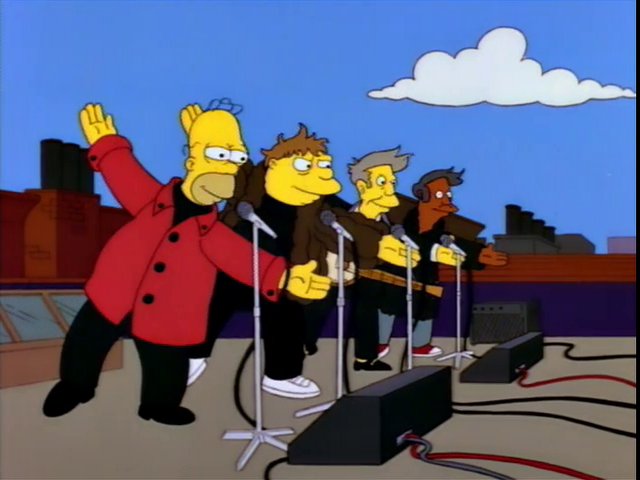
Given the show’s recent history, you might be surprised to learn that The Simpsons was originally a rejection of celebrity culture. Nothing illustrated that better than Homer’s Barbershop Quartet.
The episode parodies the metoric rise to fame, and eventual breakup of the Beatles. From their humble beginnings, the Cavern Club, tossing a founding member out for someone more marketable, the screaming girls, the wild stadium tours, the psychedelic phase, John and Yoko, to their last performance on the rooftop of Abby Road Studios. We also get a nice cameo from the “quiet one” himself, George Harrison. That made for a hat trick of all the surviving Beatles appearing on the show. It’s as much a love letter to the greatest rock and roll band of all time as it is a skewering of celebrity.
#7. Cape Feare (Season 5)
Someone’s been sending Bart threatening letters written in blood. So the FBI moves the family into witness protection until they can track down the person responsible.
This episode really embodies the classic humour of the series. It also shows why Sideshow Bob is such a great adversary for Bart. He’s a man driven by the murderous hatred of a little boy. He’s book-smart but really doesn’t quite grasp the whole concept of cold blooded murder. Bart meanwhile uses his street-smarts to outwit a mastermind in one of the best ways possible; using his own hubris and conceitedness against him.
This is really classic Simpsons humor perfected, with its smart plot and rapid fire jokes that make ever minute memorable, and incredibly quotable. It’s just a damn shame Bob has been relegated to another cartoonish villain in the later seasons.
#6. Homer’s Enemy (Season 8)
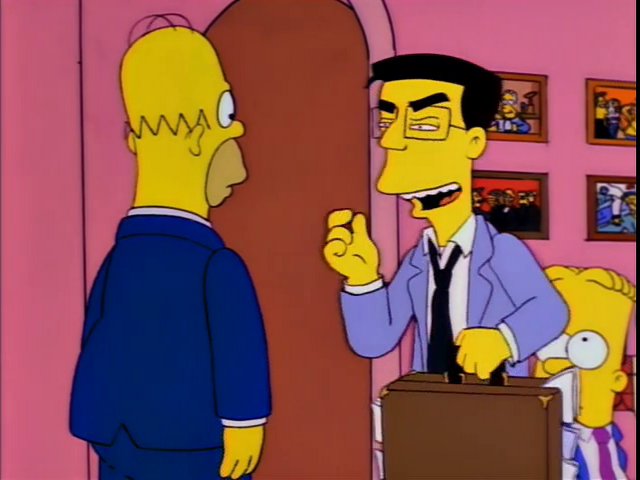
What would happen if Homer met his complete antithesis? A consummate professional who works himself to the bone, only to have nothing to show for it.
Homer’s Enemy is probably the darkest episode in the entire series, which is what makes it so brilliant. It’s an uncomfortable dose of hard reality in a show that’s all about exaggerating American life. We all know a Frank Grimes in our workplace. Maybe you are that guy. The one who sees the Homer Simpsons of the world and wonders how they keep getting ahead despite their laziness and incompetence. In the end though, maybe the Homers are the smart ones. That’s a thought that can drive any honest man to madness, as it did to Grimey.
The B-Plot of this episode is also great. We’ve all seen those $1 property ads with some dilapidated building on them, and thought “what if…” Bart’s factory adds a bit of lighter fare to break up a tense episode. Overall though, the gags around Frank’s descent into madness are some of the series’ best. Definitely a must watch if you’re into black comedy.
#5. Treehouse of Horror V (Season 6)

The Halloween episodes allow the writers to cut loose by putting the family in some pretty bizarre situations. It gives a lot of opportunity for sharp comedy and brilliant parody that’s just not possible in the series regular.
The fifth entry comes with a trio of shorts that parody Kubrick’s The Shining, Ray Bradbury novel A Sound of Thunder, and Charlton Heston’s distopian sci-fi schlock fest Soylent Green.
The Shinning is truly a masterpiece of parody as it manages to be hilarious send up the classic King/Kubrick 1980 horror film, while keeping the same creepy atmosphere. James Earl Jones’s appearance in this episode still remains one of the highlights for a series that’s had a lot of guest stars.
#4. Homer Badman (Season 6)

Homer gets falsely accused of groping the family’s feminist babysitter. The whole thing was a big misunderstanding involving a rare gummy, but nobody believes him. Homer soon becomes subject of a vicious witch hunt driven by unethical local media outlets looking to capitalize on a juicy story.
Homer Badman remains just as relevant today as it was 24 years ago. Perhaps more so, given the rise of social media, social justice, online mob mentality, the ever present sleaze of the mass media, and the consequences of everyone having a camera. You can throw a dart in any random direction and probably hit someone who’s gone through the same thing as Homer. It’s either a testament to the timelessness of the Simpsons, or our inability as a society to grow up and act like adults. Social commentary aside, this is also probably the most laugh-out-loud funny episode in the series’ entire run.
#3. Mother Simpson (Season 7)
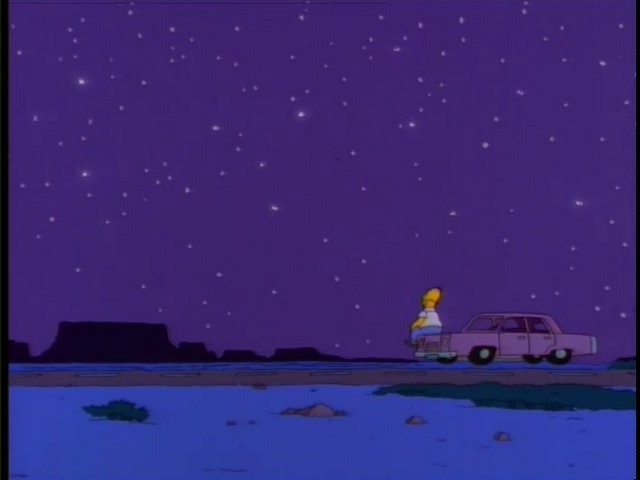
Homer had been told his mother had died when he was a child. Suddenly, after 27 long years, she wanders back into his life. Turns out she’s been running from the law since the late 60s, after getting caught up with a group of hippie radicals. Abe had told Homer she was dead in order to avoid telling his son that his mother was a criminal. Now Homer has to make up time with a mother who will end up leaving him again, and cope with a father who lied to avoid his own embarrassment.
There’s really a lot of great moments, both funny and touching. It also takes the opportunity to really explore Homer’s character as well as his relationship with Abe. Plus that ending was probably the most heart braking thing to ever appear on prime time television. At least until Fry’s dog.
#2. 22 Short Films About Springfield (Season 7)

22 Short Films is a big departure from the usual Simpsons fare, and a new comer on the list. It takes place as a series of loosely tied short skits showing a slice of life of Springfield’s odd and wonderful residents. It’s jam packed with smart, rapid fire jokes that have spawned countless memes over the years. I don’t think any one episode in the series’ entire 30 year run has had quite the cultural impact as this one. If you mention “steamed hams” anywhere in the world, people will tell you they’re “obviously grilled”.
#1. Bart Sells his Soul (Season 7)
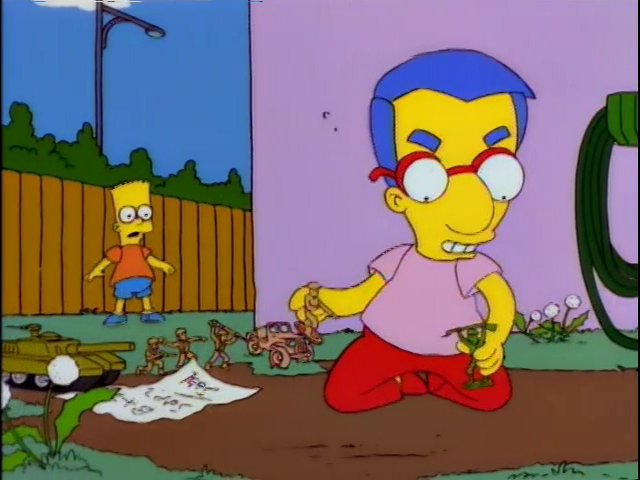
While being punished for making the church sing the entire 17 minutes of In-A-Gadda-Da-Vida, Bart and Milhouse get into a discussion of the nature of the human soul. Bart believes that the soul is just something adults made up to scare kids. Milhouse retorts by saying he’ll buy Bart’s soul for $5, which he readily agrees. Lisa warns Bart that he has made a grave error, but Bart is quick to brush off her concerns.
Shortly after, he seems to notice some unusual changes. Animals growl at him, the automatic doors of the Kwik-E-Mart won’t open, he can’t fog up the freezer glass with his breath, and he stops finding stuff funny. This leads him to make a nighttime trek across the streets of Springfield to get his soul back. Unfortunately Milhouse sold it to Comic Book Guy, who then sold it to an unknown party. Bart in desperation prays to God. Suddenly a piece of paper with “Bart’s Soul” written on it falls from the sky. Turns out Lisa had bought it. She concludes that perhaps the soul is something that is earned, not given.
Bart Sells His Soul is really the Simpsons at its best. This episode is darker than we’re used to from the series, but it uses this to tell a deeply personal and philosophical story. The way the series handled religion was above and beyond anything on television at the time. This one in particular is still shown by theologians and ministers as a means of exploring the nature of the human soul. While it’s not laugh out loud funny, there are still some absolutely brilliant multi-layered jokes in here. Such as Bart’s bike getting hit by the street sweeper. The B Plot about Moe’s flair restaurant was a bit of a week point, but overall this remains my favourite episode of all time.
The 5 Worst Episodes
#5. Some Enchanted Evening (Season 1)
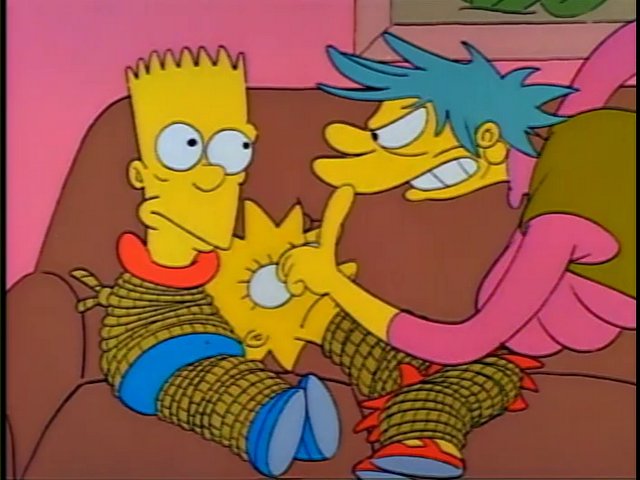
This is it. This is the episode that almost got the Simpsons cancelled before the first season even started.
The whole episode itself is pretty dull and uninspired. Homer and Marge hire a babysitter who turns out to be a notorious burglar. It was a 5 minute Ulman short padded out to fill half an hour, and it really shows. However, that’s not what makes this one interesting.
The early seasons were contracted out to animation house Klasky-Csupo. The studio is probably best known for early Nicktoons like Rugrats. They have a very distinct, let’s call it rustic, style to their work.
Some Enchanted Evening was originally planned as the series premiere of the Simpsons. Klasky-Csupo, however, had subcontracted out production to a Korean studio. When the first test prints came back, things were a bit of a mess. During a test screening, producer James L. Brooks got up and said
“This is shit.” A heated argument later erupted between Brooks and Gabor Csupo. The latter claimed there was nothing wrong with the animation, and blamed the writing. Producers seriously considered aborting the series if the next episode, Bart the Genius, turned out just as bad. However, the issues were eventually fixed. Well, for the most part anyway. It was still a bad episode in what was an overall rocky season. At least it didn’t poison the entire well.
#4. All About Lisa (Season 19)

Lisa gets a job working as a production assistant for Krusty. She eventually gets famous after appearing on the show, but quickly learns that fame is both hollow and shallow.
Lisa is probably the weakest character of the Simpsons clan, and episodes centered around her usually end up misfiring. This is especially true of the post-90s run. What makes this one a particular stinker is just how lazy it is. The entire plot is a carbon copy of season 5’s Bart Gets Famous, right down to the smallest details. They might have gotten away with it if it were a banked episode running mid-season, yet the decided to run it as the finale. Is this really what you wanted all eyes on? It really shows that the current writing staff either isn’t familiar with the show’s history, or has finally exhausted all their creativity.
#3. Clown in the Dumps (Season 26)
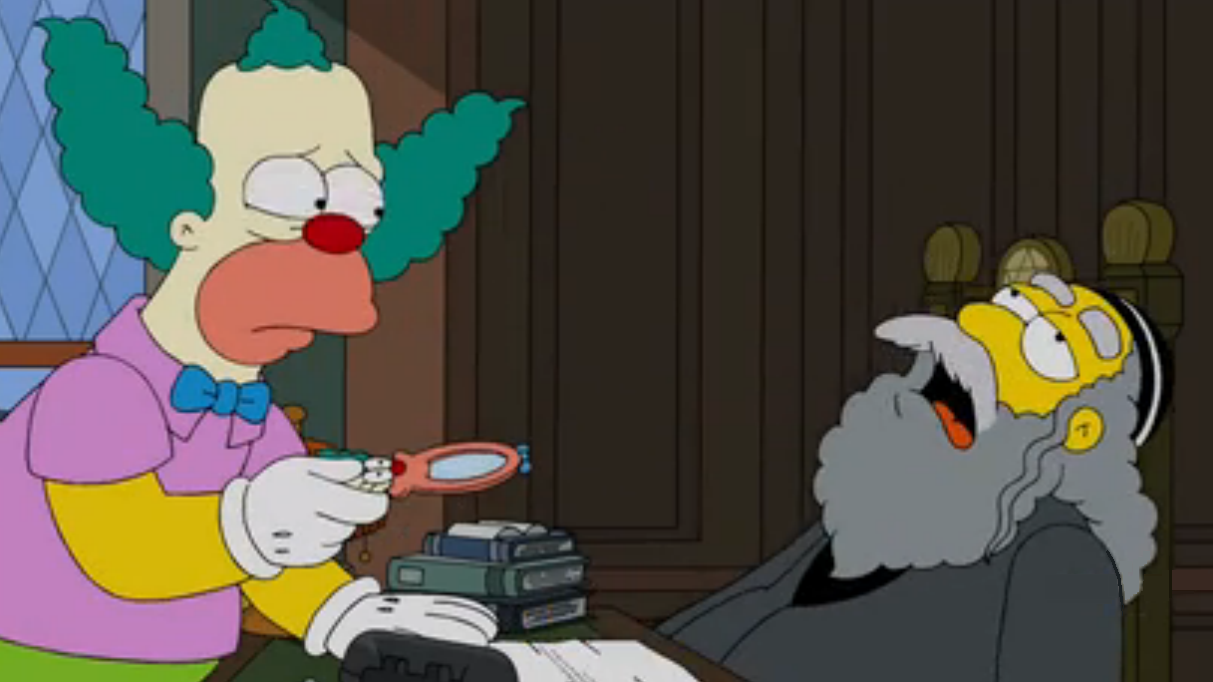
Ah, the infamous bait-and-switch episode.
Leading up to the premiere of the 26th season, the Simpsons team hinted they would be killing off a major character. Speculation ran rampant across the internet. Who could it be? Mr. Burns, Krusty, maybe even a member of the Simpson family themselves? Nope, it’s Rabbi Krustofsky, an ancillary character that hadn’t been seen for 20 years. While there’s certainly a few okay moments here, it’s still hard not to feel ripped off. The whole thing reeked of a cheap ploy to get viewers back to a series that’s well on its way out.
#2. That 90’s Show (Season 19)

That 90’s Show remains on my #2 spot for tearing up established back story and development for characters we had been intimately familiar with for two decades. It took all the issues with the Principal and the Pauper and magnifies them to the n-th degree, by going after the very core of Our Favourite Family.
Rather than meeting in the 70s and getting married in the 80s, which had remained consistent throughout the entire series, we have this cheap throwback to capitalize on 90s nostalgia. Yes, the Simpsons do operate on a floating timeline, and past events aren’t fixed. However, this one’s an episode nobody asked for, and it seems to only exist as a middle finger to long time fans. At least Homer’s grunge band was aptly named.
#1. Lisa goes Gaga (Season 23)
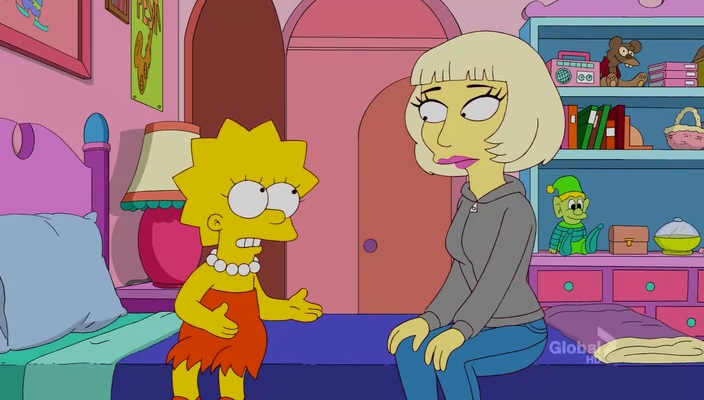
Ask any long time Simpsons fan what the absolute worst of the worst are, and this will be guaranteed to make the list. It represents everything that’s wrong with the show’s modern run. A-list celebrity guest? Check. Depressed Lisa? Check. Bland, low effort sit-com humor? Check and double check.
As stated earlier, Lisa episodes are usually fairly weak. However, the shameless branding plug for Lady Gaga just made this one an absolute embarrassment. There’s really no redeeming qualities here. Just a lot of lazy writing and uninspired comedy by a team that’s run out of ideas and doesn’t want to take risks.
The Simpsons was originally a rebellion against popular culture and the cult of celebrity. It dared to mock what many people held dear, yet it did so with heart and complex humour that few comedy shows have replicated. Now it embodies the very things it originally fought against, and lost its soul in the process.
All images property of 20th Century FOX, used under ‘fair use’ for review purposes.

